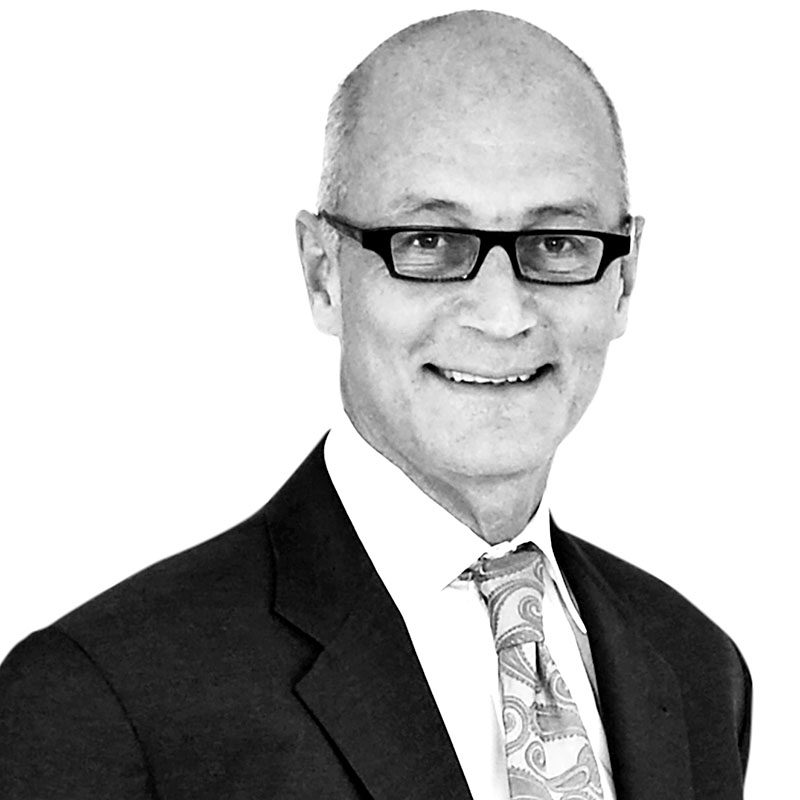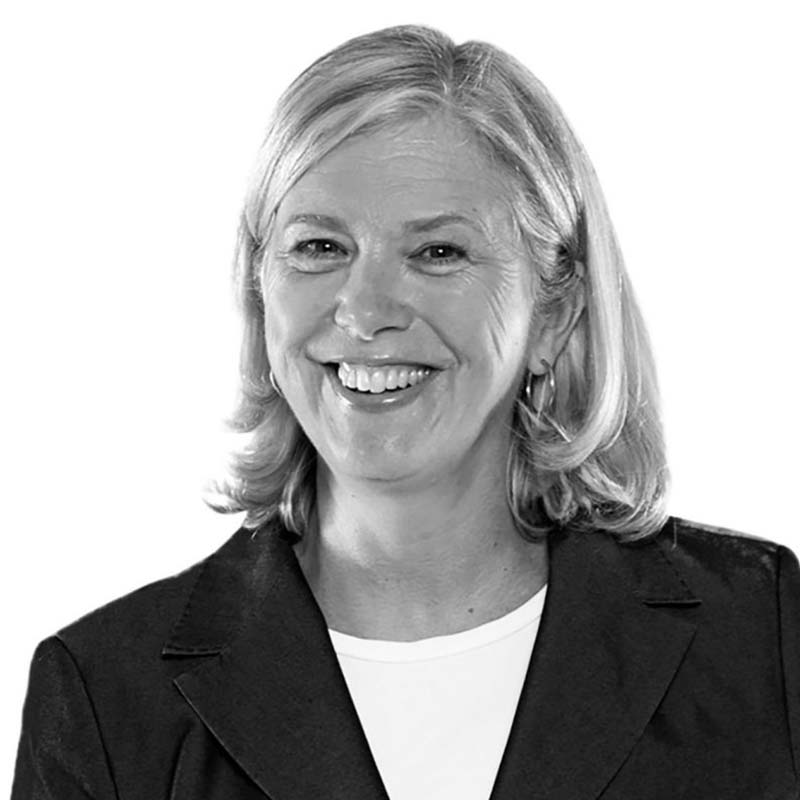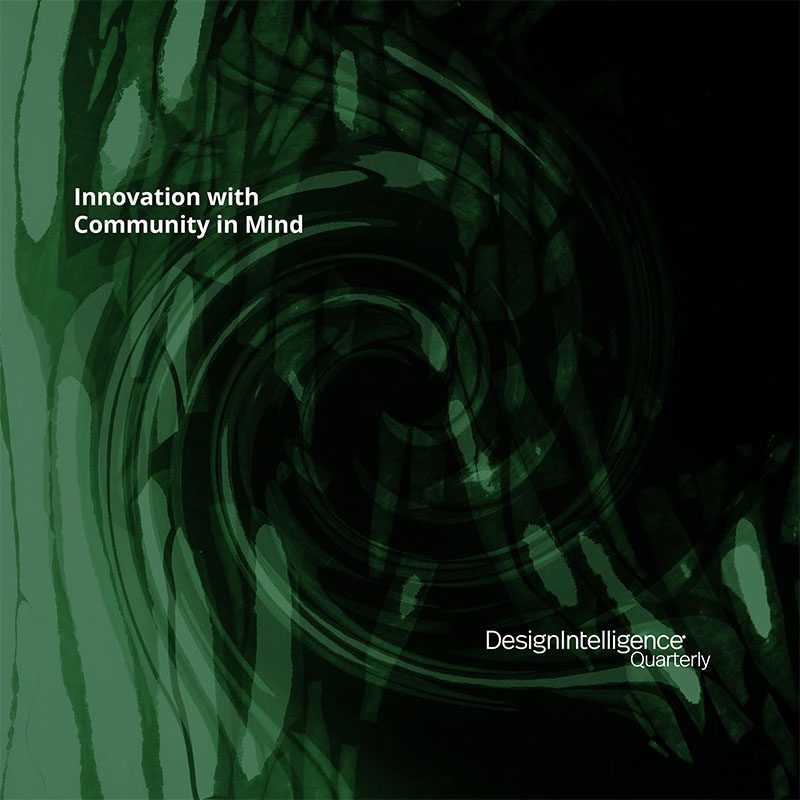Innovation with Community in Mind
by Anton Germishuizen
Senior VP, Buildings, of Stantec
& Nancy MacDonald
VP, Urban Planning Lead, of Stantec
November 24, 2021
Designers, planners and engineers will tell you we stand at the cusp of a new era in city building. Growing economic disparity, increasingly frequent natural disasters, and technological advances in mobility have had a major impact on how we approach projects.
These large trends will fundamentally change the places where we live, work and play, and it’s essential that we embrace the best ideas to address them successfully.
Resiliency/Sustainability: The best resilience planning doesn’t just build barriers, it makes new connections
Climate change represents the most significant challenge the world faces. Visceral reminders arrive with disturbing frequency, from California’s record wildfires (spurred by intensifying drought) to two Category 4 hurricanes hitting the U.S. within a month. And the 2018 IPCC climate study shows we’ve drifted dangerously close to a dire tipping point, with far-reaching implications for our communities. There has been plenty of talk on resilience planning in recent years, but the fact is that the practice remains in its infancy—and has a long way to go.
While hard infrastructure plays a central role in resilience planning, integrating it into a network of green infrastructure and community education magnifies its effectiveness and delivers much broader community benefits.
As thinking around resilience planning evolves, there’s a strong case for baking it right into community design, not segregating it as an afterthought. A holistic strategy that unites social, economic, environmental and organizational systems doesn’t just cost less, it also increases livability in cities. This is the approach we took for the Tottenville Beach reconstruction plan in Staten Island, NY, featured as a “living lab” at the 100 Resilient Cities 2017 Urban Resilience Global Summit.
Staten Island, like much of the Eastern Seaboard, suffered significant damage from Superstorm Sandy in 2012. The storm brought 16-foot tides and six-foot waves to the borough’s shores, sweeping structures from their foundations and tragically taking 24 lives.
To improve resilience to future storms in Tottenville, we developed a plan in partnership with Rebuild by Design that took a layered approach. Redundant structural elements, ecological enhancement, and green infrastructure will work together to allow the area to resist influxes of water and to recover from them more quickly. The real key to success, however, lies in extensive community engagement. This meant taking the time to understand community needs and desires and adjusting designs to reflect residents’ feedback. Shaped by residents, the final plan has helped build a sense of ownership and stewardship, which helps increase social resilience. The design most importantly protects the local residents from the wrath of nature. It also protects the value of nearby homes and keeps Tottenville Beach accessible to everyone—making the neighborhood much more attractive to residents and future buyers.
The design professions are still in the early stages of defining a path toward resilient cities, but several things have become clear. We need to use available funding more wisely to deliver projects that make our communities safer in emergencies and improve quality of life the rest of the time. The industry needs to champion expanded funding, the breaking down of siloes that hamper resilient ideas, and creation of projects that benefit communities.
There is a need for more research and more evidence of the benefits of resilience thinking in planning and design. Resilience thinking should be integrated into professional training for the next generation of planners, landscape architects, and engineers, and cities need to rethink the tender process to reward holistic solutions that add value to projects and enhance a community’s resilience. And we need to establish industry best practices that transcend design, planning, and facility and site management.

Social Equity: Radical approaches to preserving and revitalizing public housing
Over the last two decades, many cities have welcomed new development spurred by a rising demand for urban living. The trend has proved a mixed blessing, since it has also made housing in “superstar” cities like Seattle, San Francisco, and Boston prohibitively expensive, forcing low-income residents out of the center of the city, which makes it harder for them to get to jobs, social services, and networks of family and friends.
At the same time, public housing—often a life raft for low-income households—has endured a slow-motion crisis as state and federal funding for housing have dried up. Stantec led the planning and design for a project that could point the way to a solution to this problem. We’re working with a private developer and a housing authority on an audacious transformation of the 1,110-unit Bunker Hill Apartments into a one-billion-dollar mixed-income and mixed-use community that will become Boston’s newest neighborhood.
Working closely with existing residents and the larger community, we completed a master plan for the renamed One Charlestown. Because the site is a 15- to 20-minute walk to transit, it doesn’t qualify as transit-oriented development (TOD) under city rules. That limits development to 2,850 units based on parking and traffic impacts on the dense surrounding neighborhood served by narrow 19th-century streets.
Stantec prepared a “last mile” shared autonomous vehicle (SAV) strategy to link One Charlestown to transit. Robust SAV access to transit would support a 25 percent increase in market rents and cut required parking by 33 percent. Functioning as TOD would also let One Charlestown add up to 500 housing units with no extra parking or trip generation.
Technology/Mobility: Shared automated vehicles can support urbanization, promote inclusion, and improve transportation options
The pending SAV revolution is still in its infancy, which makes this the perfect time for planners, engineers, city officials and citizens to ask, “What kind of city do we want?” With countless scenarios floating around—from exacerbated sprawl to soaring demand for urban living—it’s not too early to map out a vision for an efficient and livable future. We’re helping Chamblee, a rapidly urbanizing suburb of Atlanta, do just that with a far-reaching study of how the community can establish itself as a regional hub for smart mobility. The city would launch the initiative with a first mile/last mile automated shuttle to MARTA’s Chamblee.
Ultimately, we see SAVs unlocking opportunities to improve urban places by making land use more efficient. The most immediate benefits of SAV integration will come in the areas of biking and walking, parking and more efficient development. In Chamblee and elsewhere, we advise clients to study these areas first.
1. Biking and walking
Most projections suggest that SAVs will allow cities to reduce the amount of land devoted to street rights-of-way and parking. That would create more space—both physical and political—for dramatically improving the way streets serve pedestrians and cyclists. Adding inviting new public spaces, more facilities for walking and biking, and new development—to help finance these improvements—would yield a range of benefits, from gains in public health and more vibrant street life to greater equity and big greenhouse gas reductions.
2. Parking
If most residents can zip around via SAV fleets, cities and developers can dramatically redirect the resources they devote to building and maintaining parking lots and garages, which recent research suggests are dramatically overbuilt. Other estimates suggest the United States has anywhere from three to eight parking spaces for every car. This would free developers to add high-value new buildings on the footprint of old parking infrastructure, development that can help finance an enhanced public realm. We’re helping Chamblee and other clients think creatively about the transition to SAVs, how to use freed-up land for the greatest benefit, and how SAVs will improve the ways people move in, out and around the city.
3. Infill development
To ready themselves for SAVs, cities need to rework their codes now to encourage mixed-use infill development. Using overlooked or underused spaces in central districts creates a virtuous circle, assuring more customers for SAV fleets, which introduce more mobility options for everyone. (Coincidentally, denser development also increases walking, which brings its own suite of benefits.) Importantly, infill development makes more efficient use of existing infrastructure—a fiscal boon for local governments—and supports existing networks of businesses and amenities.
Every project we undertake begins with the goal of improving our communities. We see resiliency, social equity and smart mobility as having the power to change the way we live. As we look to what lies ahead, we’re making sure we incorporate the best ideas possible to ensure that our work fully addresses the challenges of today—and lays the foundation for the cities of tomorrow.
Anton Germishuizen is Senior VP, Buildings, of Stantec. He fosters a commitment to design excellence and the growth of Stantec’s design culture. He remains actively engaged in the marketing and design of projects, with a particular focus in the civic sector. A strong proponent of interdisciplinary integration in design, he is the co-author of 10M: Toward an Integrated Approach to Design.
Nancy MacDonald is VP, Urban Planning Lead, of Stantec. Her fascination with cities drew her to the world of planning. She loves the way they change, grow and fit together, combining diverse human, built and environmental elements to make something greater than the sum of its parts. She says that with the right mix of people and disciplines, there’s no limit to what a great planning team can achieve for communities and clients.



